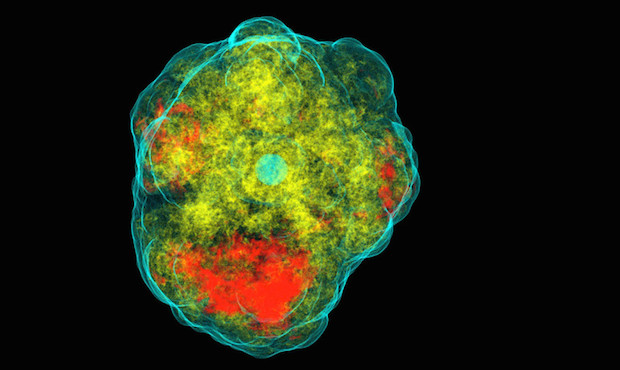Watch what happens when a massive star explodes
The death of giant stars known as supernovas can be messy affairs.
Supercomputer models have suggested the collapse sends debris hurtling off in opposite directions. Now, scientists for the first time have confirmed that is the case after observing the remnants of supernova 1987A.
Using NASA's Nuclear Spectroscopic Telescope Array, or NuSTAR, Caltech's Fiona Harrison and her team were able to observe this unusual behavior by zeroing in on the frequency changes of the energy from titanium-44, which is produced during the early stages of a supernova explosion.
"Titanium-44 is unstable. When it decays and turns into calcium, it emits gamma rays at a specific energy, which NuSTAR can detect," said Harrison, a professor of physics at Caltech and NuSTAR's principal investigator. The findings were published in the journal Science.
Supernova 1987A was first detected in 1987, when light from the explosion of a blue supergiant star located 168,000 light-years away reached Earth. Not only was it the closest supernova to be detected in hundreds of years, but it also marked the first time that neutrinos had been detected from an astronomical source other than our sun.
Neutrinos, nearly massless subatomic particles, were thought to be produced in large quantities during Type II (or core collapse) explosions, so their detection during 1987A supported some of the fundamental theories about the inner workings of supernovae.
The next step for scientists is trying to understand what happens just before a supernova explosion - something they have not been able to observe until now.
Scientists have theorized that just before an explosion, the supernova's core changes shape, transforming from a perfectly symmetric sphere into a wobbly mass made up of turbulent plumes of extremely hot gas. This is illustrated in the video above, a minute-long, 3D simulation of what scientists believe happens just before the supernova explodes.
"If you make everything just spherical, the core doesn't explode. It turns out you need asymmetries to make the star explode," Harrison said.
According to the simulations, the shape change is driven by turbulence generated by neutrinos that are absorbed within the core. To confirm that, researchers are hoping to one day observe neutrinos and gravitational waves from the next galactic supernova.
"This turbulence helps push out a powerful shock wave and launch the explosion," Christian Ott, a professor of theoretical physics at Caltech who was not involved in the NuSTAR observations, said.
A better understanding of the asymmetrical nature of Type II supernovae, Ott said, could help solve one of the biggest mysteries surrounding stellar deaths: why some supernovae collapse into neutron stars and others into a black hole to form a space-time singularity.
It could be that the high degree of asymmetry in some supernovae produce a dual effect: the star explodes in one direction, while the remainder of the star continues to collapse in all other directions.
"In this way, an explosion could happen, but eventually leave behind a black hole and not a neutron star," Ott said.
